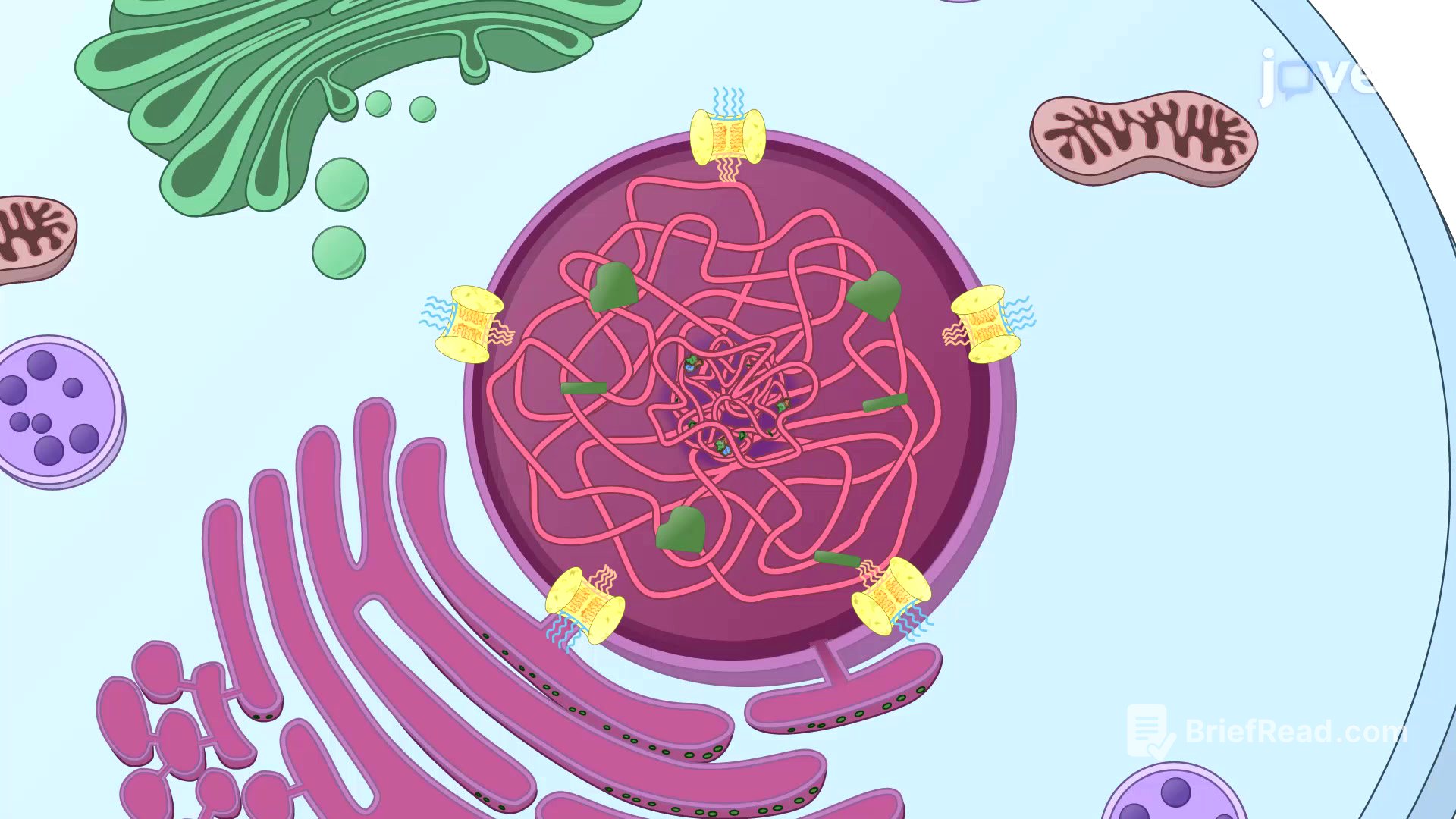TLDR;
The nucleus is the control center of eukaryotic cells, housing chromosomal DNA and regulating protein production. DNA is organized with histones into chromatin, which is diffuse during interphase for transcription and condenses into chromosomes during cell division. The nucleolus, a non-membrane bound organelle within the nucleus, is the site of rRNA synthesis and ribosome subunit assembly. Additional nuclear bodies like Cajal bodies and speckles compartmentalize the nucleus and facilitate biological reactions.
- The nucleus regulates gene expression and protein production.
- Chromatin structure affects DNA accessibility for transcription.
- The nucleolus synthesizes rRNA and assembles ribosome subunits.
- Nuclear bodies compartmentalize the nucleus and support biological reactions.
The Nucleus
The nucleus is a membrane-bound organelle in eukaryotic cells that serves as the control center. It houses chromosomal DNA, which governs gene expression and precisely regulates protein production within the cell. Unlike the DNA in mitochondria and chloroplasts, which is specific to those organelles, the nucleus manages the cell's overall genetic functions.
Arrangement of DNA within Nucleus
Gene expression regulation in the nucleus depends on factors like DNA structure. DNA is wrapped around histones, forming chromatin, a DNA-protein complex. During interphase, chromatin is loosely organized for easy DNA access during transcription. As the cell prepares to divide, chromatin condenses into distinct chromosomes for segregation into daughter cells.
Nucleoli
The nucleolus is a non-membrane bound organelle within the nucleus, forming around ribosomal RNA chromosomal loci. It is the site for rRNA synthesis and the assembly of ribosomal subunits. These subunits are then exported from the nucleus to form functional ribosomes.
Additional Sub-nuclear Structures
The nucleus contains other nuclear bodies like Cajal bodies, speckles, and paraspeckles. These structures spatially organize the nuclear environment, creating specific sites for biological reactions. Their membrane-less structure enhances the exchange of contents with the nucleoplasm.









